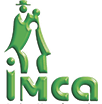Instituto Mayor Campesino
 | |
| Abbreviation | IMCA |
|---|---|
| Predecessor | Peasant University |
| Established | 1962[1] |
Founder | Francisco Javier Mejía, SJ |
Director | Erminsu Iván David Pabón |
| Affiliations | Jesuit, Catholic |
| Website | IMCA |
Instituto Mayor Campesino (IMCA) was founded by the Jesuits in Buga, Colombia, in 1962 to be of service to rural villagers. It has undertaken a wide variety of works over time for the integral development of workers and peasants.[2]
History
Each phase of the Institute's development, guided by reflection and action, has attempted to empower rural populations to pursue their own development. From 1963-69 IMCA focused on the education of adults in literacy and cooperatives, through courses, workshops, and public meetings aimed at conscientizing and unifying.
From 1970 to 1977 IMCA continued its focus on community development but turned more to the youth. A male and female secondary education program was initiated that included community service. The program grew to include 400 students.
An evaluation showed that grassroot structures were not being changed by the educational program. The educated youth were often lost to the villages. And so in 1978 IMCA resituated its program to the villages with a focus on informal education and participatory research. Animators were trained in 40 rural communities. The communities would identify needs and IMCA would train villagers with the ability to respond to those needs. This led in 1984 to the formation of separate departments for research, pastoral work, education, and organization, that came together at the grassroots level. Seminars, publications, and advisory work were included in this approach. An evaluation in 1985 led to the formation of teams in three zones in the state of Valle de Cauca to develop an economic system appropriate to each zone. This led to the present division of IMCA activities as described below.[2]
Activities
IMCA is currently involved in what might be seen as six complementary endeavors.
- Production and commercialization: minimization of agri-chemical (agrotoxicos) inputs purchased outside of the small farm setting and emphasis on ecological practices and biodiversity.[3][4]
- Organization: regional organization, as in forming fair trade coffee cooperatives,[5] and on a global level as in protecting farmers' rights.[6]
- Training in response to expressed needs from the various regions and from people's councils;[7] training for creation of peasant reserve zones.[8] IMCA also collaborates in university courses, as in peace studies.[9]
- Pastoral assistance in unifying the community around its Christian faith, through animators, celebrations, and faith-based immersion experiences for students.[10][11]
- Publication of materials to support the various programs, and in international journals.[12] IMCA hosts a database for its work on its website.[13]
- Networking with other such institutions. An example would be its membership in the Community Biodiversity Development and Conservation Network (CBDC) that promotes conservation and sustainable development worldwide at the grassroots level.[14] IMCA was a part of the global "Climate-smart agriculture" planning in preparation for the ecology talks in Paris in December 2015.[15][16][17] It is also a member of the global alliance to enhance the International Legal Framework to Protect Human Rights from Corporate Abuse.[18]
In 2016, a diverse group of professionals at IMCA was organized into teams working separately in the cultural regions of Quiamanó and Calima.[19]
References
- ↑ History from IMCA website. Accessed 27 May 2016.
- 1 2 Occasional Papers series, Amherst U. Accessed 27 May 2016.
- ↑ Community Biodiversity Development and Conservation statement carried by Asia-Pacific Network on Food Sovereignty. Accessed 27 May 2016.
- ↑ Manual (2001). Prácticas Agrosostenibles para el Departamento de Cundinamarca. Bogata: Government of Cundinamarca. Retrieved May 25, 2016.. P.102.
- ↑ Global Exchange on "Fair Trade Coffee Cooperatives." Accessed 27 May 2016.
- ↑ UK Food Group, on biodiversity. Accessed 27 May 2016.
- ↑ "A methodological approach using grounded theory in industrial engineering research applied to a study of a regional knowledge creation process". Global Journal of Engineering Education. 18 (1): 40. 2016.
- ↑ Voice of the People Weekly Accessed 27 May 2016.
- ↑ Universidad del Valle. Accessed 27 May 2016.
- ↑ Xavier University immersin program. Accessed 27 May 2016.
- ↑ St.Bartolome immersion experience. Accessed 27 May 2016.
- ↑ "Reducing risks for small coffee farmers". Gate. February 1995.
- ↑ IMCA documents. Accessed 27 May 2016.
- ↑ Ban Terminator. Accessed 27 May 2016.
- ↑ Climate Smart statement. Accessed 27 May 2016.
- ↑ Institute of Science in Society article, 28 October 2015.
- ↑ Asociacion VidaSana. Accessed 27 May 2016.
- ↑ Treaty Movement. Accessed 27 May 2016.
- ↑ Teams from IMCA website. Accessed 27 May 2016.
Coordinates: 3°52′18.11″N 76°17′55.03″W / 3.8716972°N 76.2986194°W ,